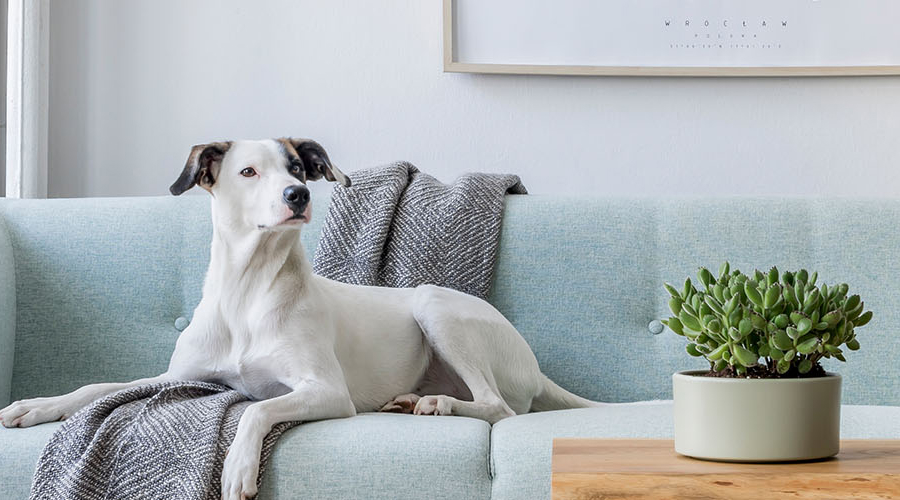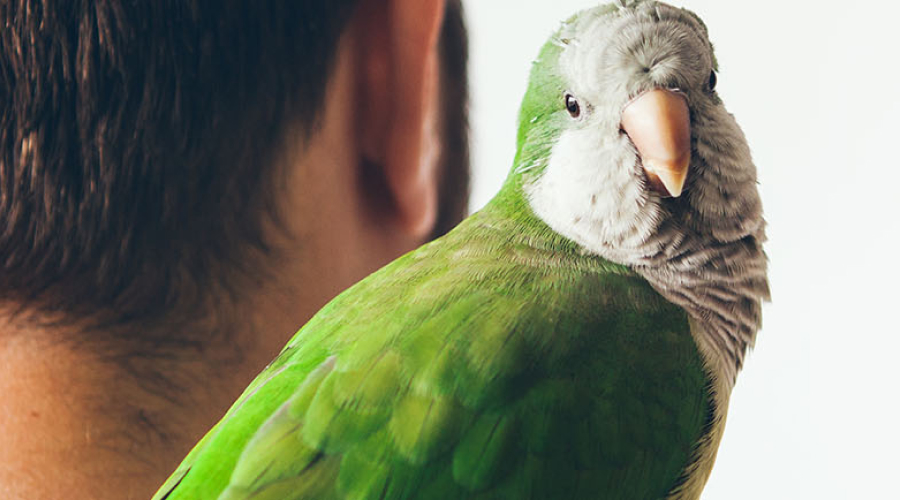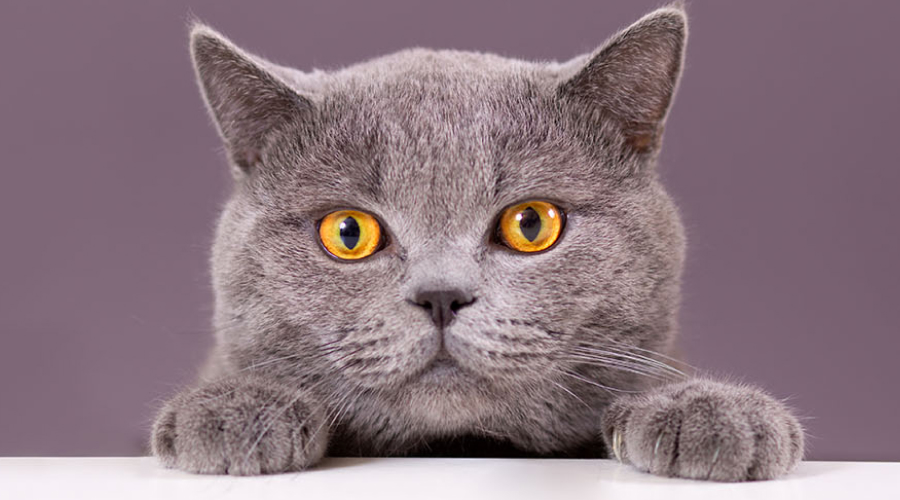Individual house pets indeed have different personalities. If you already have a cat at home and are looking to introduce a dog – breed matters! Here are the following eight (8) best dog breeds for cats.
Majority of folks are either a dog or a cat person. But what about those of us who love both? Is it possible to have both domesticated animals in our household; a doggy and pussycat become compatible and peacefully coexist? Can we prevent their aggression and territorial issues that may arise?
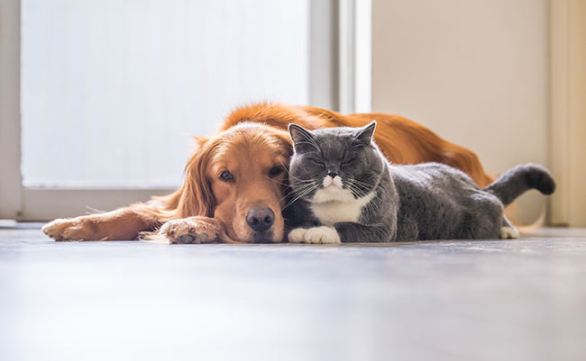
This breed is one of the most popular in the world. “Goldens” are known for being playful, social, loyal, friendly, enthusiastic, and intelligent. They’re great companions for cats of all ages as long as they’re properly introduced. The golden retriever is genuinely a gentle hound despite their large size.
Physical characteristics
- Sturdy
- Muscular
- Medium-sized with a lustrous gold coat
- Broad head
- Friendly & intelligent eyes
- Short ears
Activities
- Search and rescue
- Hunting tests
- Guides for the blind
- Narcotics detection
- Agility
- Therapy dog
- Service dog
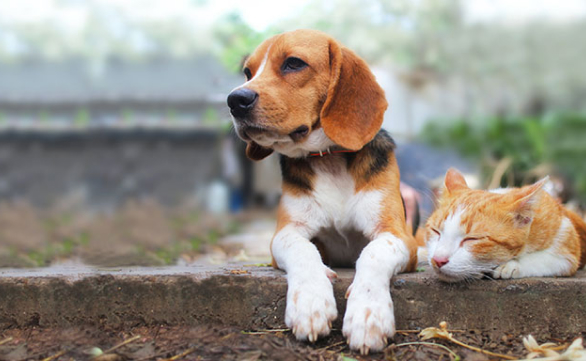
Beagles are a subset of hound called scent hound, and they love to use their nose. Traditionally, these dogs were bred to hunt in large packs together with hunters. So basically, they are used to get along with other species such as felines.
The remarkable thing about these little dogs is that they are very matey and their personality might match your cat, which enjoys a friendly wrestling match.
Physical characteristics
- Muscular
- Solid-body with a domed skull
- Squarish muzzle
- Long floppy ears
- Perky long tail held upward
Activities
- Agility
- Field Trials
- Hunting Tests
- Obedience Training
- Rally
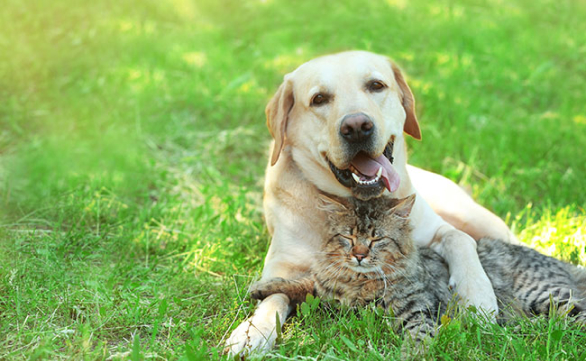
Labs are kind and outgoing and are known to get along with everyone they meet, regardless of species. Their amiable nature is part of the reason why this breed is ranked consistently among the most popular in Australia. Loving and gentle, they seem like too big for average-sized felines. Nevertheless, this breed is proven to be perfect with kids, and it is no different when it comes to cats.
Is it any surprise that the exuberant and friendly is near the top of this list? Majority of Labrador Retrievers have a pretty even temperament, and they will tolerate even the meanest house cat.
Physical characteristics
- Medium to large-sized body
- Athletic build
- Smooth, dense and water repellent
Coat - Broad skull and powerful jaws
- Tapered tail
Activities
- Agility
- Field trials
- Hunting tests
- Obedience training
- Rally
- Tracking
- Guide dog
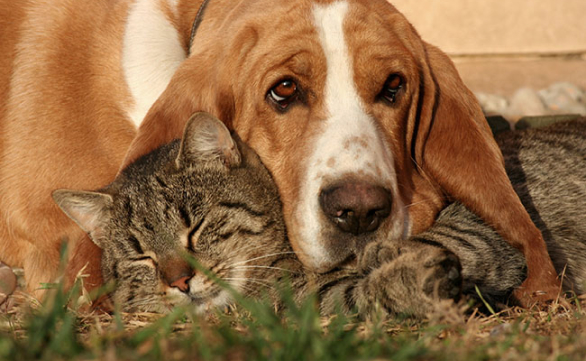
Like the Beagle, the Basset Hound is also a scent hound. This breed is inclined to excessive sleeping. Thus, this kind of dog is exceptionally laid-back and low-key.
With their short legs and long, stout bodies, Basset Hounds are sluggish— an excellent trait for cohabiting with cats. Their general laziness shows maximum tolerance towards other household pets and is often an invitation for a cat to use him as a couch.
Physical characteristics
- Long body with short, crooked
legs - Long drooping ears
- Wrinkled forehead
- Hanging lips
- Doleful eyes
Activities
- Field Trials
- Conformation
- Hunting
- Sleeping
- Tracking
- Obedience training
- Rally
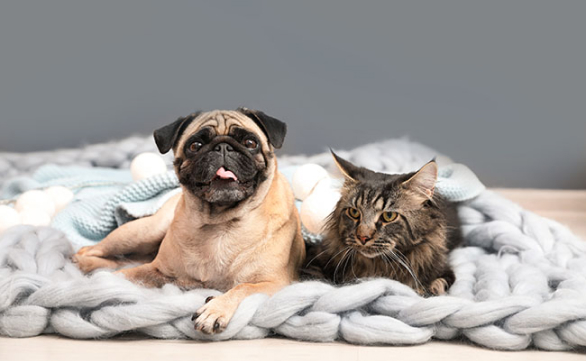
Pugs pack a lot of love and personality into a little body. They may be small, but they are tough enough to have a feline playmate. Since they’re diminutive themselves, pugs tend to be celebrated around smaller animals.
Most pugs lack the inclination to chase or otherwise bother a cat. However, if introduced properly, a cheeky pug can often be found snuggling up next to a feline companion.
Physical characteristics
- Small, barrelled body
- Round and wrinkly head
- Short nose
- Curly tail
Activities
- Agility
- Obedience training
- Rally
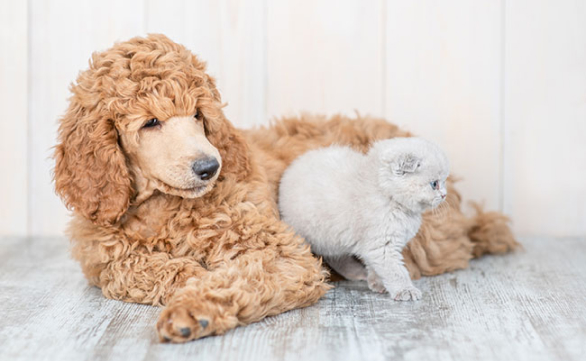
Poodles are generally smart and energetic. This breed comes in different size varieties, and all three do react towards cats in specific ways. That is why it’s essential to introduce them as soon as possible, so you can make sure their personalities and playfulness are compatible. “Toy” Poodles tend to play with them; “Miniatures” tolerate them, while “Standards” pretend felines don’t exist. Bottom line, all three seem to make excellent cat companions.
Physical characteristics
- Curly, dense single-layered coat
- Tend to have a leggy appearance
- Long muzzle combined with dropped
ears
Activities
- Agility
- Conformation
- Hunting tests
- Obedience training
- Rally
- Tracking
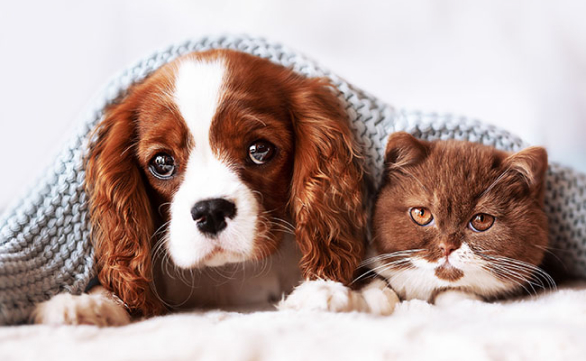
This particular kind of dog is part of the American Kennel Club Toy Group. Although not much bigger than a cat, the Cavalier King Charles Spaniel is as sweet as they come.
This affectionate dog is respectful of other animals’ territories. Meaning, he is not likely to infringe on the cat’s space. Cavaliers also might get lonely or anxious if they’re left alone for long stretches. So, having another animal’s presence in the house is bound to bring him some comfort, companionship as well as security.
Physical characteristics
- Medium-length silky, wavy coat
- Big round eyes
- Long ears
- A face that always looks like a puppy
- Fringes on their ears, chest, legs,
feet, and tail
Activities
- Obedience training
- Conformation
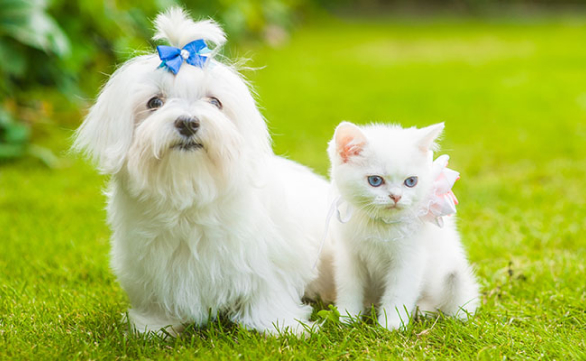
A Maltese behaves a lot like some cats. He is a slacker who likes curling up on the couch and ignores anything else – including the activities of the cat. These traits make this tiny dog perfect for cat owners who are accustomed to low-maintenance pets who don’t require constant stimulation.
Physical characteristics
- Dark and alert eyes
- White fur that is naturally long
and silky - Single-layered coat without an undercoat
Activities
- Conformation
- Obedience training
- Agility
Bear in mind that these are generalizations. Most dog breeds can live calmly with a cat if they are socialized as puppies – training them to leave the cat alone. Teaching your dog a “leave it” and “stay” cue can help keep the compatibility. Proper introductions will also help, and it’s a good idea to make sure the cat always has an escape route. Never leave your new dog alone with your cat until you are positive they won’t have issues.
The individual personality and age of both the dog and cat will also come into play. For example, an older cat that likes to be left alone might not mix well with an overly bouncy puppy.

